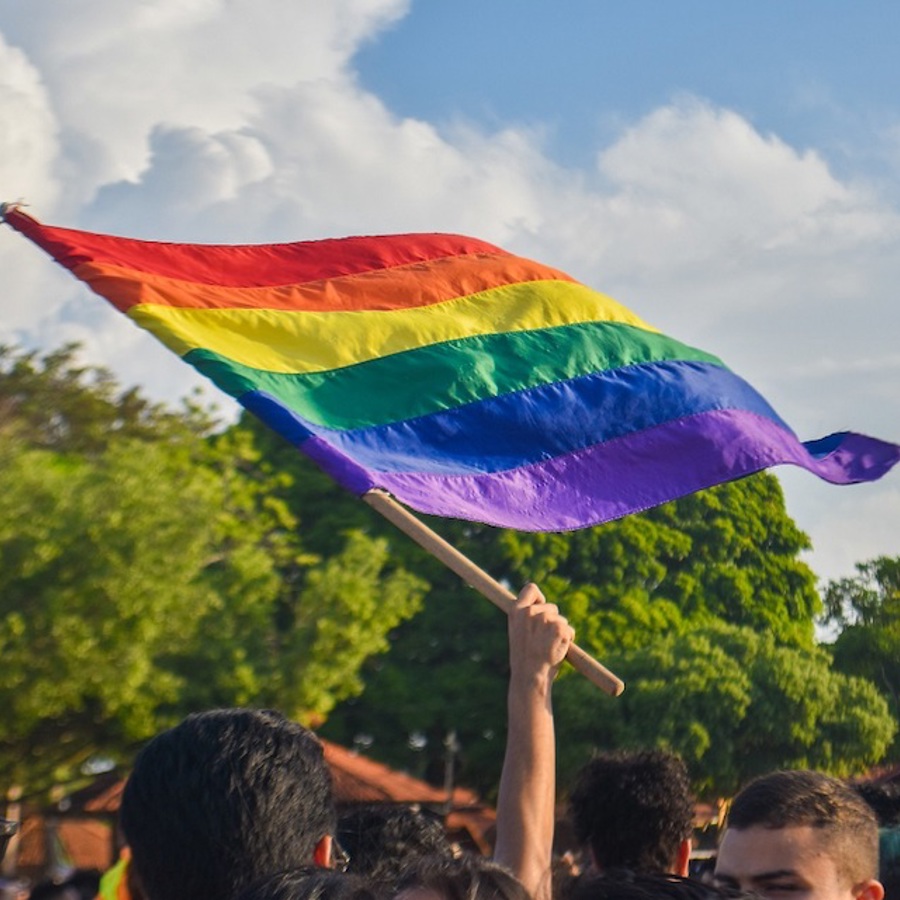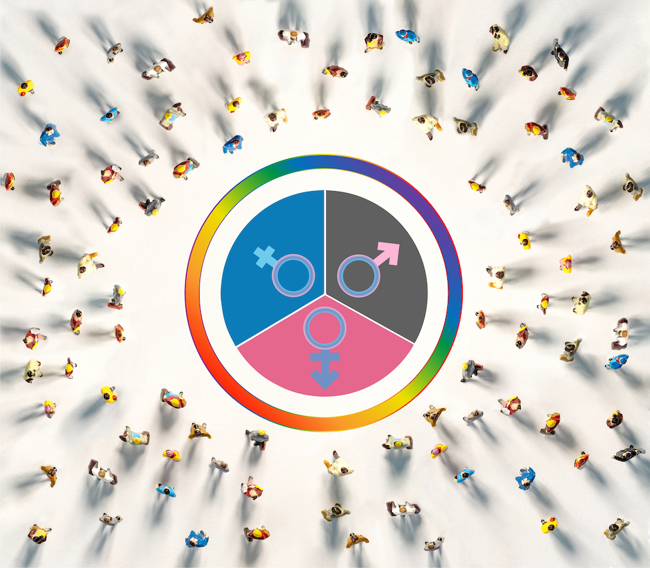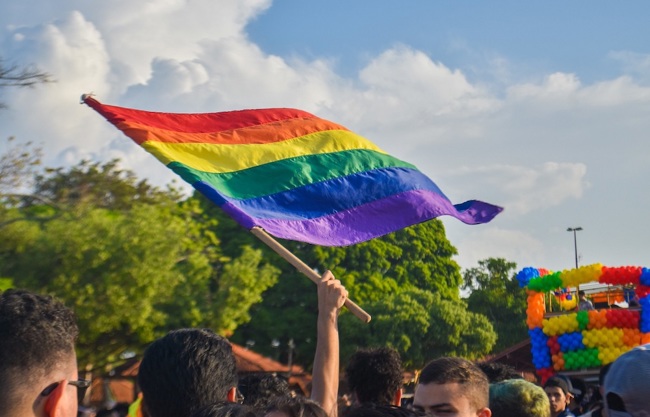
If someone is LGBTQIA+, is it likely their siblings will be too?
February 21, 2024

- Related Topics:
- LGBTQ+,
- Sexual orientation,
- Gender identity,
- Complex traits
A teenager from California asks:
If someone is LGBTQIA+, is it likely their siblings will be too?
The short answer is that it’s complicated. If you identify as LGBTQIA+ there is a small chance your sibling will too, but other factors may have a larger influence.¹⁻⁴
LGBTQIA+ includes a wide range of sexual orientations and gender identities. It stands for lesbian, gay, bisexual, genderqueer or questioning, intersex, and asexual. The ‘+’ refers to other non-straight-identifying people.
Some studies suggest that sexual orientation is a combination of genetic, environmental, and hormonal factors. However, these studies usually only include people who identify as gay or lesbian. Bisexual, transgender, and other genderqueer-identifying folks are typically left out.
Here I’ll sum up what we know about the wide range of factors that influence LGBTQIA+ identity.

Sexual orientation vs. gender identity
As I mentioned, the LGBTQIA+ community includes a wide range of sexual orientations and gender identities. Even though we often group all of these together, they are very different. It’s also important to keep in mind that the terminology is always evolving.
Sexual orientation is different from gender identity. Sexual orientation refers to who you are attracted to, whereas gender identity refers to how you feel inside about your gender despite your physical body or expression.
A cisgender person is someone who understands that their gender identity matches the body they were born in. Whereas a transgender person is someone who understands their gender identity does not match the physical body they were born in.
Intersex people are born with traits that would not necessarily be characterized as male or female at birth. While many different processes can cause this, often this has a simple genetic explanation. This article explains different characteristics that may make you intersex and the genetic mechanisms involved.
Other gender identities are not as well studied. For example, little to no research has been done on transgender and gender-diverse communities. In a recent study surveying these communities, most people were concerned about the potential impact of this kind of research. They worried that it might lead to discrimination and other negative outcomes.⁵
When investigators are planning studies on marginalized communities, it's important to engage community members throughout the decision-making and research-planning process to help prevent ethical issues.
How does genetics affect sexuality?
Although gender identity hasn’t been studied much at all, there are some studies on sexual orientation. While some folks used to think there might be a single gene that causes homosexuality, scientists now know that’s not true. One study found there could be hundreds or thousands of genes that may contribute to your sexuality!¹
To make things more complicated, these genes partly overlap with other personality traits that are influenced by your environment.¹
Studying twins and families can also help us determine genetic factors. Identical twins, who share 100% of their DNA, and fraternal twins, who share 50% of their DNA, are often compared because they share so much DNA and similar environments.
From studying twins and families, we know that genetics is only a part of what determines your sexual orientation. For example, one study found that genetic effects only accounted for about 40% of same-sex attraction in identical-twin males and 20% for identical-twin females. The greatest effect was due to individual environmental factors.³
If it were purely due to DNA, we would expect identical twins to always have the same orientation. But that is not the case. Instead, studies have shown that if someone identifies as gay or lesbian, there’s only a slightly increased chance they’ll have gay or lesbian siblings.⁴
However, it's important to note that these studies have limitations. Many of them only focused on individuals who identify as gay or lesbian, leaving out bisexual or asexual individuals. Additionally, since some of the research dates back a decade or more, it might not fully consider generational differences and an evolving understanding of what it means to identify as part of the LGBTQIA+ community.
What else influences sexual orientation?
If only part of your sexual orientation can be explained by genetics, what else is there? Studies often say that the “environment” has a large influence on your sexual identity. But what does this mean?
Your environment can be defined in many ways. For example, it might include the environment a developing baby experiences during pregnancy, the environment a baby is born into, or how accepting a person’s surrounding community is.
Several studies have shown that males who have more older brothers are more likely to be gay.² Scientists believe that the uterine environment may be responsible for this effect. It seems that this may be due to different proteins being developed in the uterus after multiple boys are born.
As far as your environment after birth, it’s a bit difficult to interpret. Too many random factors shape your development as a child and throughout adulthood.
Some factors like where you grew up can play a role in how accepting people can be towards the LGBTQ+ community. For example, bigger cities are often seen as more accepting of genderqueer people.⁷ This may provide a safe space for people to feel more comfortable “coming out.” But that doesn’t mean a bigger city necessarily causes more LGBTQ+ people to be born there. Just like smaller cities are not necessarily going to cause more straight people to be born there.
Another factor can be how accepting guardians and friends act towards the LGBTQIA+ community. In some cases, generational differences can play a role. Usually, younger generations are said to be more accepting. Therefore their children may be more likely to come out to them. Regardless of age, perceived social support is important to a person’s coming out journey.⁶

Why isn’t there a clear answer?
Again it’s important to keep in mind that the studies mentioned here are not perfect. LGBTQIA+ people encompass a wide range of sexualities and gender identities, but a lot of the research only considers a fraction of the community.
Recent studies show that people are 60% more likely to identify as LGBTQIA+ as of 2021.⁶ Perhaps in the future we’ll know more about the evolving nature of sexual orientations and gender identities and how to best support them.

Author: Andrea Ramirez
When this article was published in 2024, Andrea was a Ph.D. candidate in the Department of Biology, studying the diversity of root anatomy across the Brassicaceae family in José Dinneny’s laboratory. She wrote this answer while participating in the Stanford at The Tech program.
 Skip Navigation
Skip Navigation
